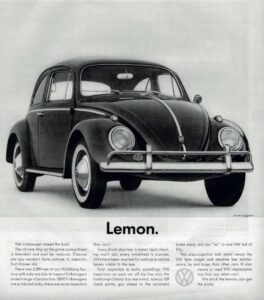The storytelling obsession

The marketing profession has become obsessed with the idea of storytelling.
Marketing channels have essentially become modes of storytelling. You’ll hear the desire for “good stories” used regularly in reference to content, videos, websites, social media, podcasts and even data.
Marketing titles have also evolved to include storytelling. A recent Google search for “storytelling jobs” produced over 1,000 results. Here are some of the positions that came up:
-
- Chief Storytelling Officer
- Story Strategist
- Director of Digital Storytelling
- Head of Story and Narrative
- Visual Storyteller
- Storytelling Coach
- Content Storyteller
- Executive Storytelling Head
- Brand Storyteller
But it doesn’t stop there. Even entire agencies have been rebranded to focus on storytelling instead of marketing.
From a creative standpoint, this recent obsession with storytelling can be a good thing, especially in B2B marketing. It gives validity to the idea that it’s better to tell rather than simply sell. That helps clients embrace a narrative strategy for their white papers, case studies, videos and other tactics.
However, here’s an important clarification that’s getting lost: Storytelling is not a hot new trend, it doesn’t signify innovative thought leadership and it will not reshape marketing. That’s because truly memorable marketing has always been about storytelling.
There was a time when most advertising campaigns, especially those for major consumer brands, focused solely on the featured product and its benefits. The established approach was to show a hero shot, mention the product’s name at least five times, and sell, sell, sell the primary differentiators.
A select few agencies and clients dared to take a different approach from the straight product sell, and marketing storytelling was born. These visionaries believed that the story would sell better than a more promotional approach, and they were right.
To illustrate the point, let’s look back at some of the best early examples of storytelling.
“Anthony! Anthony!”
If you already recognize the TV commercial from that simple quote, you’re not alone. You may even be able to recite the entire thing (your humble author can).

The story:
Instead of simply showing spaghetti or talking about the flavor, Prince created a timeless tale. An Italian mother leans out the window of her Boston North End apartment and calls her son, Anthony, home to dinner.
A deep, resonant narration accompanies Anthony racing through the streets: “Most days, Anthony takes his time going home. But not today. Today is Wednesday, and as every family in the North End of Boston will tell you, Wednesday is Prince Spaghetti Day.”
The strategy:
Prince didn’t promote noodles, they claimed Wednesday dinner as theirs forever. It didn’t matter if you were in Boston, Houston or Washington, this meal would make your family run to the table smiling.
The backstory:
The 12-year-old “Anthony” in the commercial was a real-life North End resident named Anthony Martignetti. The producers spotted him playing on the streets and a spaghetti star was born.
Click here to watch the full commercial
“Lemon”
“Nobody counts the number of ads you run; they just remember the impression you make.” Bill Bernbach of DDB said that, and very few ads have ever made as strong an impression as his agency’s “Lemon” masterpiece for Volkswagen.

The story:
What sane car manufacturer would run a full-page ad proclaiming that their vehicle is a failure? Volkswagen did and they made every potential car buyer hit the brakes.
The story here is simple: Volkswagen Inspector Kurt Kroner rejected this particular VW because the chrome strip on the glove compartment was blemished. The narrative then takes us through the ridiculously rigorous inspection process for each car. The moral? “We pluck the lemons, you get the plums.”
The strategy:
Car buyers in the early 1960s looked down their noses at the lowly VW Bug. It was small, perceived as unreliable, and remembered as “the Führer’s car” by many. Overcoming those perceptions was a monumental task. DDB crushed it by grabbing the reader’s attention with a simple, scintillating statement and a cleaner design style than any other auto maker’s ads.
The backstory:
Helmut Krone designed the ad and Julian Koenig wrote the copy for “Lemon,” but it was only the beginning. Some other memorable ads included:
“It’s Ugly But It Gets You There”
“If You Run Out of Gas, It’s Easy to Push”
“Live Below Your Means”
Legend has it that the ads were in black and white due to a limited budget. In any case, they stood out and people loved the approach.
Boomm hopes you enjoyed these classic examples of marketing storytelling. Now, if you’ll excuse us, we have a client’s success story to write.


